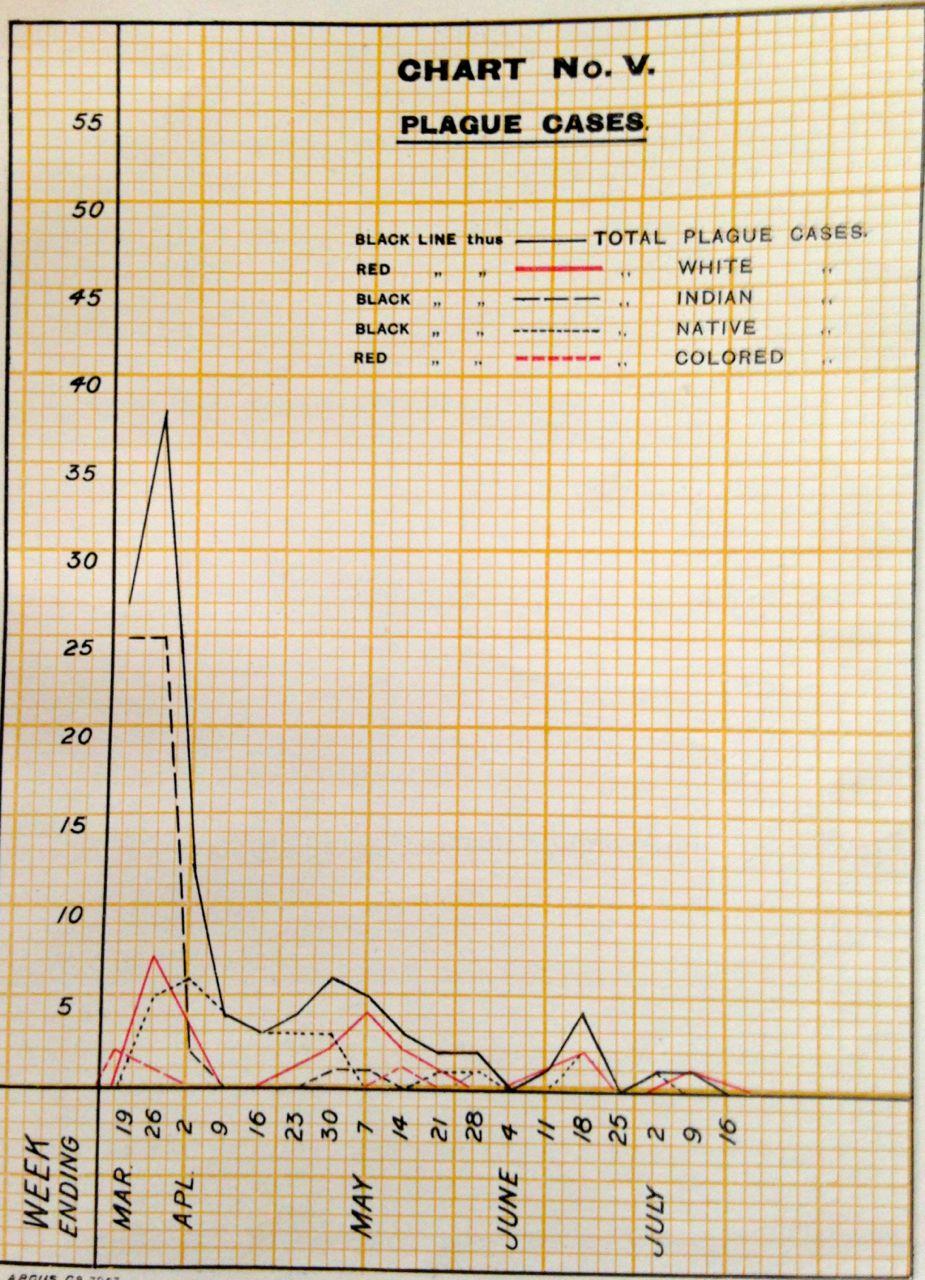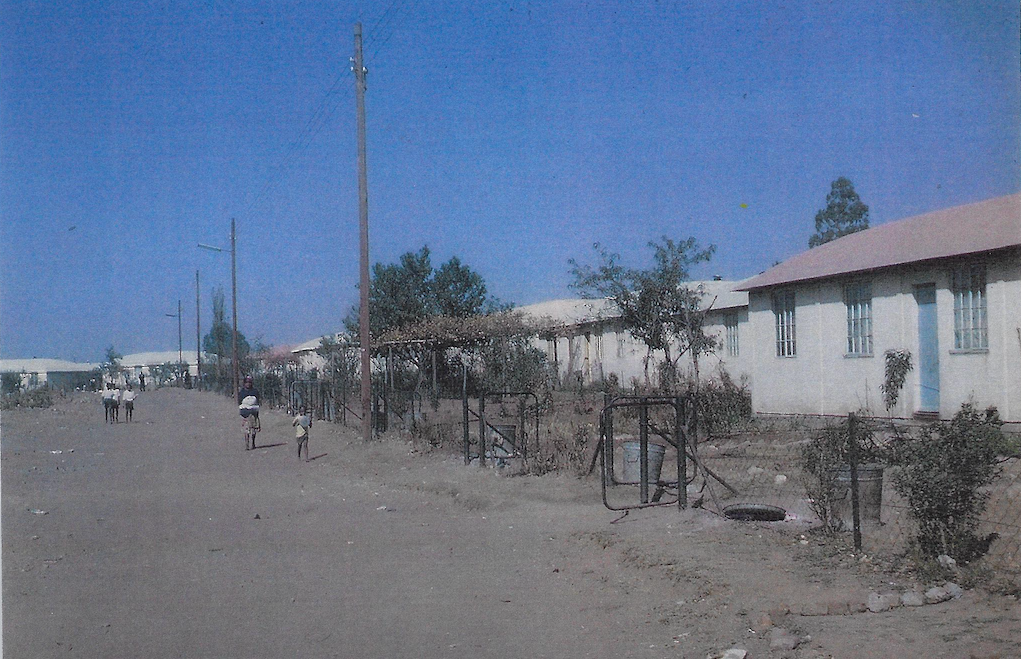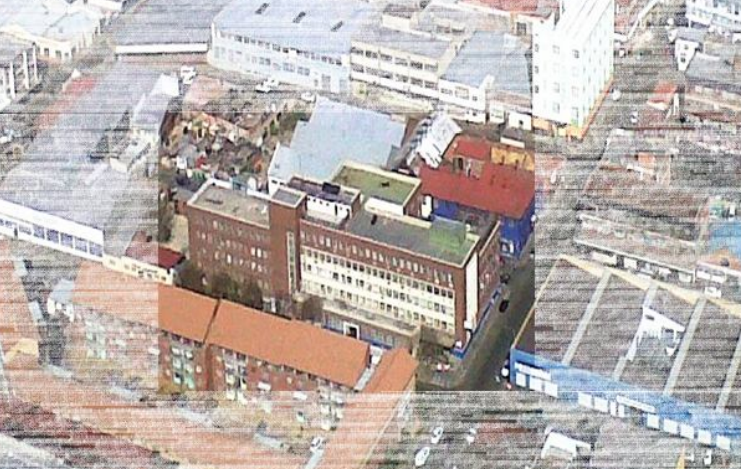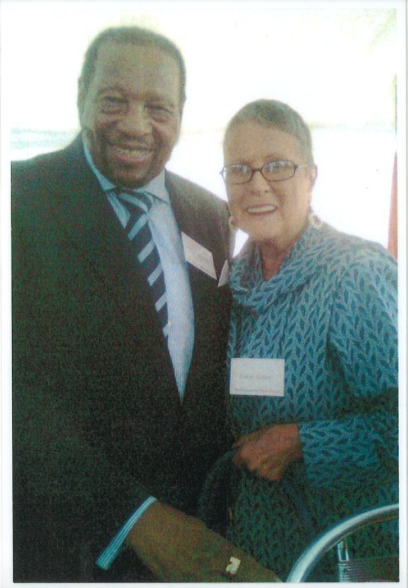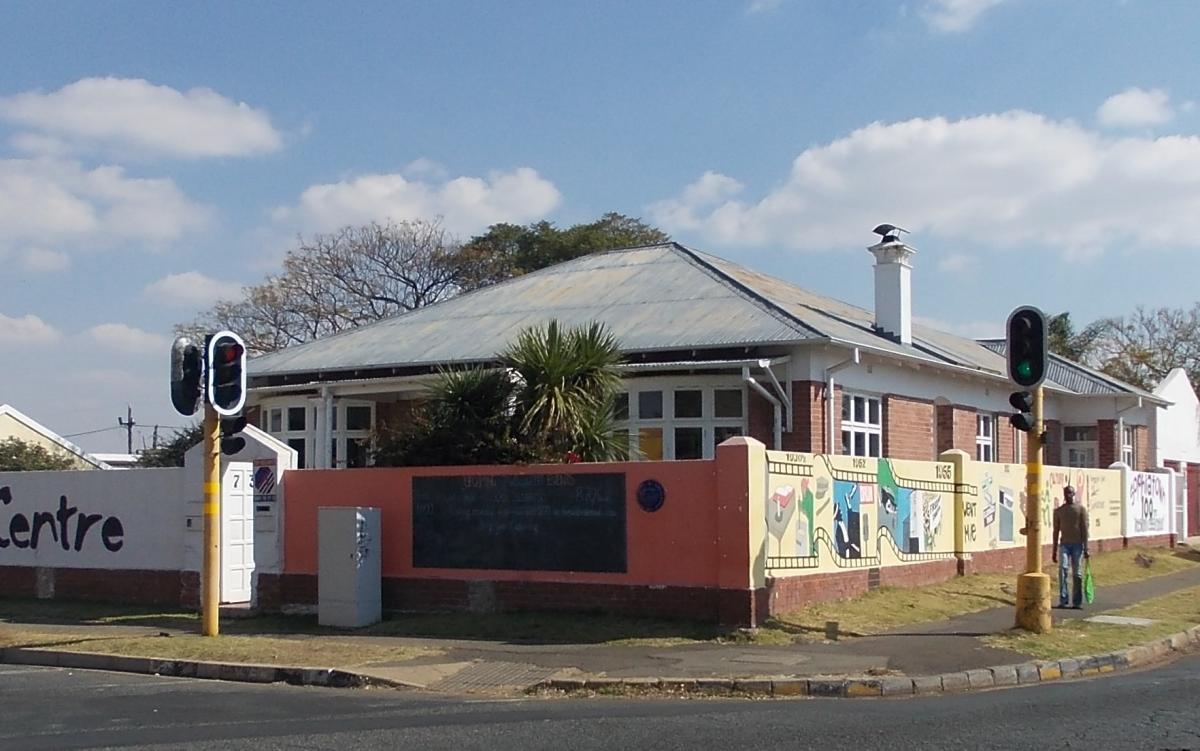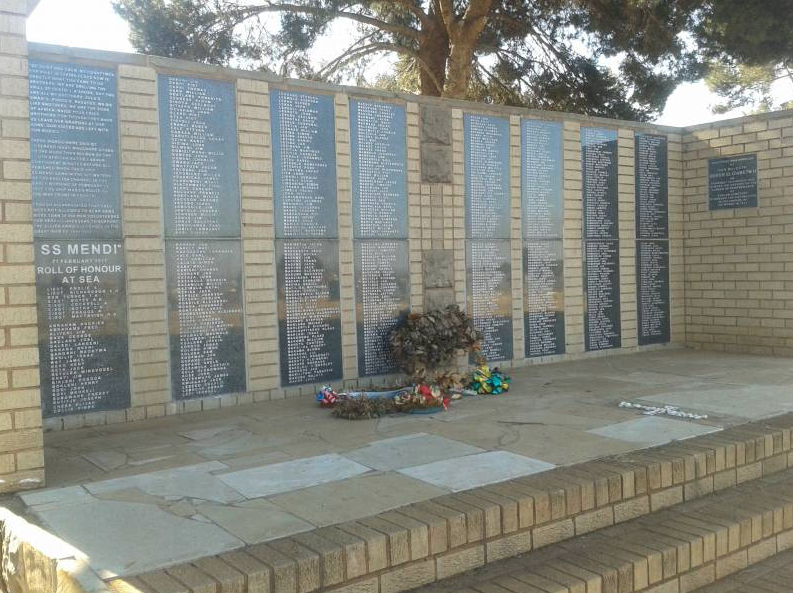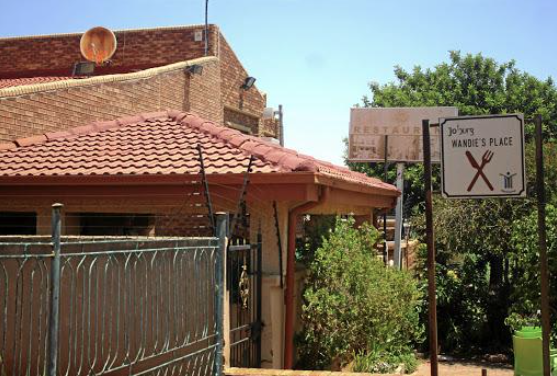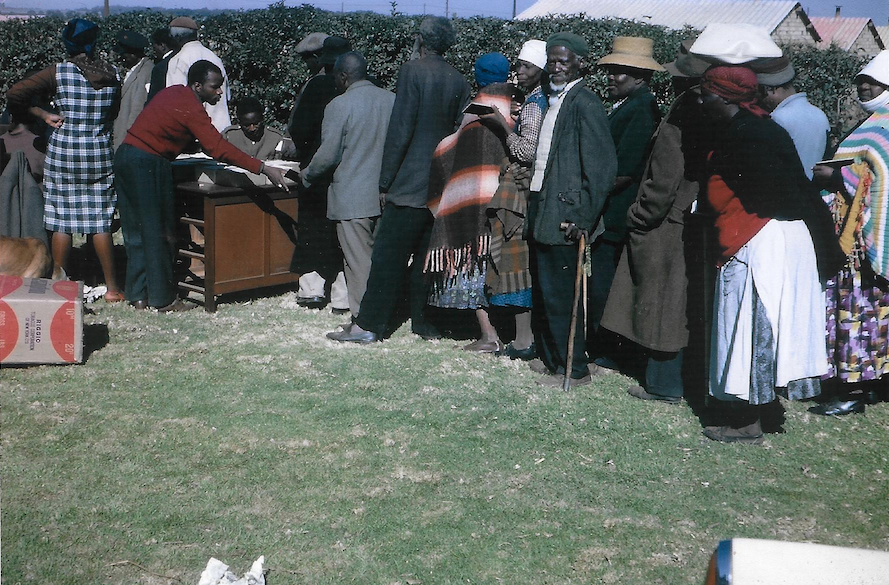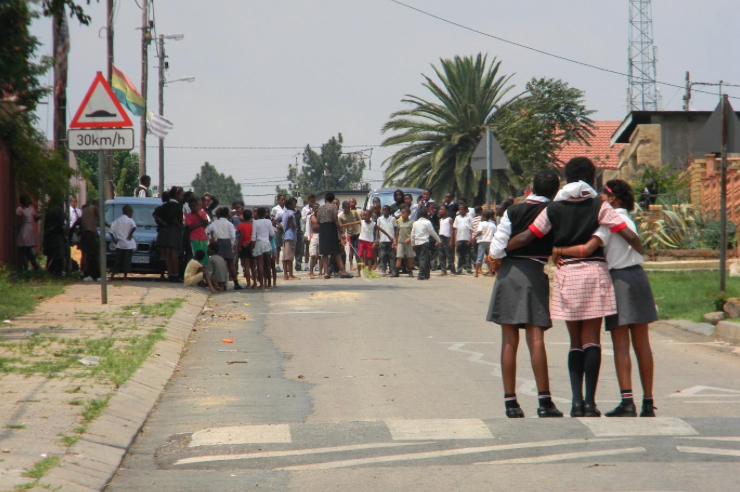
Disclaimer: Any views expressed by individuals and organisations are their own and do not in any way represent the views of The Heritage Portal. If you find any mistakes or historical inaccuracies, please contact the editor.
Dube is the name of a popular township in Soweto, but on a larger scale Dube is a well-known Nguni surname. However, in nature the name belongs to an animal, e-dube – a lovely, cheeky one with bold black and white stripes, the zebra. Here follows an exploration of the story of the Dube Township, Soweto’s own zebra. It is bound to reveal a few secrets and highlights how the Dube history differs from that of other Soweto townships. There are however, also similarities and a common apartheid and struggle past.
The Dube Township’s journey begins in 1946, the year in which the Johannesburg City Council (JCC) had a dream to create a middle class African village. For this a portion of land adjacent to the first townships like Orlando West and Jabavu on the Klipspruit farm was identified. Since 1946 was the year in which John Langalibalele Dube – a popular and outstanding African leader with a remarkable history – died, his memory was honoured by naming the hope for a better living dispensation after him. However, the dream had many nightmares before Dube became a township in 1954 – the eventual product a watered down dream, yet an integral and special part of Soweto.
John Dube
Of course in 1946 and 1954 the name Soweto was not yet in existence and areas for black residents were referred to as native settlements (1). Soweto was only officially adopted as a name in 1963 following a competition. The native settlements which became Soweto, were under the control of the JCC (and for the ultimate Soweto JCC had to buy a few more farms adjacent to Klipspruit).
The history of the JCC/Soweto relationship was highlighted in a paper read in 1966 by Councillor Patrick Lewis at the Wits University: ‘A city within a city – the creation of Soweto’ (2). He admitted an initial indifference and neglect by the mother city which he claimed had passed and the JCC accepted full responsibility for the development of Soweto and its people. He also outlined visions of leadership promotion, improvement of living conditions and the like. In this period the JCC was politically under United Party rule while the country was governed by the Nationalist Party (apartheid policy). The JCC’s good intentions may have been affected by a degree of paternalism at a local level and harsh dictates and laws from government’s side.
Native Settlements
The native settlements/Soweto’s story goes back to a Klipspruit Settlement of 1904 on the Klipspruit farm. The major portion of the settlement became Pimville in 1937 (3). This initial settlement resulted from the first forceful removal of black people from the Johannesburg area, mainly compounds and ‘locations’, due to the bubonic plague scare (a contagious lung condition) and compounds were burnt to the ground as a health precaution. British rule in Johannesburg was in force since May 1900 and the Water and Sanitation Board was in charge of the exercise. There was an unwillingness to accommodate the blacks in any of the Johannesburg suburbs and they were taken by force to the Klipspruit farm which was purchased in 1903 for the city’s sewerage and water works. This settlement was more than 10 miles/16 kilometers from Johannesburg, therefore some distance from places of work. Nancefield, the first railway station and the railway line, was only opened in 1906.
Chart of plague cases by race (1905 Plague Report)
At the end of May 1910 the country changed politically to a more democratic dispensation with the introduction of the Union of South Africa. However, only white males had the vote at a national and local government level (females got the vote a few years later after a big fight).
The JCC established the Department of Non-European Affairs (NEAD) in 1926 to manage all native settlements. In the mentioned area there was only the Klipspruit settlement and in 1932 Orlando East’s development commenced. This was the first planned settlement – an attempt to improve the accommodation type, therefore some effort of change as claimed by Lewis.
The number of formal settlements increased and there were the following in the area in 1946, albeit in their infant stages: Orlando East and West, Klipspruit, Pimville, Mofolo, Jabavu (commonly known as White City). Furthermore a number of people lived in poor conditions in the Moroka site and service scheme and a large group of squatters were accommodated by Council in shanties in Shanty Town (4).
The Jabavu / White City elephant houses circa 1975 (Estelle Bester)
Government Control
It needs to be noted that the NEAD – like all municipalities with settlements for black residents who were not considered as permanent in the area – had to comply with a battery of government laws and regulations controlling black citizens, which Lewis referred to as a compass of legislation (e.g. influx control, male pass books, liquor laws, housing provision and more). The legislation and many amendments dated back to the Natives (Urban Areas Act 21 of 1923) of the Smuts government. It was all consolidated by the United Party Government into the Native Areas Consolidation Act (Act 25 of 1945).
Housing provision in general (rented, look alike) was funded by white taxpayer money (not including the 1956 mining loan houses and in 1954 the soldiers houses although the design was still that proposed by the CSIR) and the history of housing shortages and long waiting lists (and corruption) is common knowledge.
The NEAD built a new head office in 1954 at 80a Albert Street. This was the nerve centre for controlling black people's lives in Johannesburg. (The Heritage Portal)
The Dube Journey Continues
History reveals that when the JCC started with the Dube journey it hoped for a more upmarket ‘native village’ to accommodate ‘elite African people’ with ‘fair education’ who could afford middle class houses with freehold rights on stands of 464m². This move somehow resulted from a report from the central government’s Fagan Commission which highlighted, inter alia, an urban housing need for the middle class/educated/urbanised black citizens and it would surely have been a much needed development.
Implementation of the plan however met with the first obstacle when freehold ownership was not permitted due to the Native Land Act of 1913 (forbidding black land ownership) and related legal issues. Therefore a 99-year Leasehold scheme – popular in Europe at the time – was suggested, but this also failed.
In 1948 the National Party took over national government from the United Party and promoted the apartheid policy. The new rulers extensively utilised and amended the existing Native Areas Consolidation Act of 1945 to introduce harsher measures and more oppressing regulations, (e.g. the Group Areas Act of 1950, stricter Influx Control measures and pass laws for females).
The NEAD had to toe the line but hope and planning for the upmarket village remained. However, Dr Hendrik Verwoerd became Minister for Native Affairs in 1952 and developing the Dube dream met with new challenges. In the end only a 30 Year Leasehold scheme was permitted for the middle class (i.e. ownership of improvements/structures on an Erf which remained government property and a lease of 30 years had to be signed). The message from many however was: ‘if no land tenure, we rent houses.’ On record however, there are a number of residents who did make use of the 30 Year Leasehold option until the government stopped the option in 1968.
The plan for low density in Dube failed further since Verwoerd instructed a decrease of stands to a size of 247 m² each (some residents did however manage to negotiate double stands from the JCC which the central government probably knew nothing about). The concession of a 30 Year Leasehold was also available in other townships e.g. Orlando West.
The town planning exercise (e.g. residential, recreation, sport, education, trade) and servicing of the Dube Township (roads, water reticulation, sewerage services, etc.) already commenced in 1951 and was adjusted as changes were enforced. The idea of keeping it exclusive could not be realised and the majority of houses in Dube fall into the smaller rented (Regulation 7 or 56/1) category – which impacted handsomely on the density. Nevertheless, in 1954 Dube became a township of the south western areas/native settlements with residents moving in and the town getting its own identity – match box houses and a variety of more 30 Year Lease dwellings, bigger in size and with at least water and sewerage inside the homes and not in the yard like at rented government houses. The better houses are mainly in an area known as Dube Village although there were more in the greater Dube Township.
The ideas of Dube’s exclusiveness was furthermore adversely affected in 1955 when authorities erected Soweto’s first single sex hostel for migrant labourers in this township (with an unfortunate story in modern times). A violent clash between Zulu hostel dwellers and the Ma-Russians (Basotho’s) is still in the memory of older residents.
Historical Papers at Wits holds a copy of the Dube Riots Commission Report
The Nationalist policy was also to separate townships along ethnic lines and Dube was reserved for Nguni residents. This was not enforced and Dube residents are a good mixture of all South Africa’s ethnic variety. Remarkable people from different cultures have or are still living in this area, e.g. Dr R Gugushe (educator), Dr Richard Maponya (entrepreneur), Andrew Mlangeni (activist and prisoner Robben Island); late Gibson Kente (dramatist/playwright), late M T Moerane (World newspaper editor 1962/68), Late Dr Motlana (chairman Committee of 10); his wife Sally, leader and business woman, Leslie Sehume (journalist/boxing coach).
The author with Dr Richard Maponya in March 2013
The families of Dr B Vilakazi (academic/poet), as well as the family of Dr A B Xuma, together with the Mabuze family were forcefully resettled in Dube from Sophiatown in the period from 1955 and were accommodated in more upmarket homes of the 30 Year Lease Scheme (removals started in 1955 and not every family was forced to Meadowlands like popular history claims). History is also full of the footprints of these families, like that of other residents, also from more government houses.
The AB Xuma House in Sophiatown. One of the few houses that wasn't demolished during the forced removals. (The Heritage Portal)
The Dube Ma-Soleng Legacy
A most important characteristic of Dube is what is popularly known as the ‘Dube Ma-Soleng’ – call it some prominent military zebra stripe. This refers to the 200 houses built for and occupied by members of the Native Military Corps who served in World War II. After their return from the war which ended in 1945, the soldiers settled in Shanty Town and called their area Tobruk (a famous battlefield during the war). The JCC/government/SA League negotiations regarding accommodation for these war veterans resulted in permission for the JCC to build Regulation 7 houses (4 room) for the soldiers in the Dube Village area of the Dube Township and funded by the league (popularly known league red poppies in button holes).
Home and Property Ownership
The Dube Ma-Soleng houses and other similar Regulation 7 houses, including self-built or purchased properties (officially Regulation 6 & 8 respectively) dwellings, have been transferred into ownership – full Title Deed. The government promoting ownership of homes resulted from the wake-up from the Youth Revolution in 1976 and government then accepting permanency of urban blacks. A special effort was made to have the soldiers’ houses transferred and many of them have been improved by owners. At the time of writing this article only one veteran soldier was still alive and a hundred years old.
Initially houses were transferred to registered tenants free of charge with a modest payment for the Erf. In terms of the Conversion Act of 1988 (amended) self-built houses/properties could be transferred with a Title Deed completely free of charge. It did or does however, not happen automatically since applications and supporting documents which comply with information on well-kept official records, are subject to an adjudication process. Also rented houses (Regulation 7) are transferred with the Erf and all together free of charge since the 1990) (5).
The majority of the housing properties in Dube are therefore now privately owned. Old business properties have been and can be transferred in the same manner and this is encouraged to promote ownership.
The ownership of properties has contributed more to the stabilising of the Dube Township, or shall we call it: achieving a notable honour to the big zebra, Johan L Dube. It also serves as collateral and in 2018 a privately owned old 4-roomed council built house, is available for resale at half a million rand and more.
Fortunately the soldiers’ families with their memories are a treasured part of the Dube community. During black history month (February) the soldier’s community fosters the tradition of remembering and honouring the loss of lives with the sinking of the SS Mendi on 21 February 1917. The Soldier’s Chapel adjacent to the soldier’s houses has been the centre of memorials and ceremonies. The late Frank Sexwale was a respected leader of the veteran soldiers. He was also the leader who met Queen Elizabeth II when she unveiled the SS Mendi Memorial in the Avalon Cemetery in the company of President Nelson Mandela. Andrew Mlangeni, one of the Rivonia trial who spent time on Robben Island and has been a Dube Township resident since 1954, affectionately remembers Sexwale as a staunch member of the ANC branch which he (Mlangeni) started in 1954 after moving into a purchased house in Dube from Shanty Town. Frank Sexwale expressed pride of his children (e.g. Colonel Johnny, well known businessman in Sandton and Tokyo Sexwale, MP and first premier of Gauteng in 1994) who were members of the ANC and active in the struggle. In 2007 he died at the age of 97 and was buried on SS Mendi Day. His widow is still staying in the original house, now improved.
Mendi Memorial, Avalon Cemetery, Soweto (SAHRA)
Cheers to Shebeens and Tourism
The Dube story cannot be complete without including the story of shebeens and their role in Soweto tourism. Shebeens - illegal drinking places in residences, also known as a spot – date back many years and are an important part of township life. Ellen Khuzwayo regarded the shebeen culture as a response to oppression. This culture dates back to the early days of the gold rush.
In 1928 black people were prohibited by law to purchase or drink so-called European liquor. The domestic brewing of traditional beer was also prohibited and the local governments were given the right to produce sorghum beer. Illegal shebeen trades in houses by so-called shebeen kings and mainly shebeen queens was a popular trade and they made use of the services of white liquor smugglers (beer and spirits, wines) which made liquor quite pricey at shebeens. Yet many children’s school and other studies were paid with shebeen income.
In 1960 the government changed the law to allow blacks to buy ‘white liquor’ as from 15 August 1962. Local government had the sole right to sell liquor at liquor outlets and beer halls only. It put no end to the shebeen trade - liquor only became more readily available. In Dube the following shebeens served the community prior to that date and after: Falling Leaves; Tula’s; Story’s; Shit-No-More (sic).
In 1982 Wandie Ndala also started a shebeen in his family home in Mahalefele Road. The police and local government’s inspectorate raided shebeens regularly and there are many stories of how they poured expensive liquor into gutters, or could be bribed with a bottle of brandy. At Wandie’s there are still visible bullet marks from police.
When the shebeens had the opportunity to become legalised Wandie’s Place was the shebeen in Dube which applied and made required alterations to the 4-room residence and in 1985 was granted Consent Use by the local government which enabled them to obtain a licence from the Liquor Board. His was the 5th successful shebeen applicant in Soweto to be granted Consent Use. As soon as a shebeen became legalised it was called a tavern, although the old traditional names of tavern and spot stuck.
SATOUR soon negotiated with Wamdoe to start the first restaurant for tourists and Wandie’s Place was for years the only Soweto restaurant for tourists. Although more tourist restaurants in Soweto were eventually established this is still the only one in the Dube Township and remains popular.
All liquor stores in Soweto are privately owned mainly as a result of the youth revolution of June 1976 when local government liquor stores were looted and set alight.
Tourists are often surprised to learn that word shebeen originates from the Irish word ci-bin which means pale ale. Shebeens were well known in Ireland and even Scotland and it was known that their liquor served there is diluted (pale ale). The township shebeens however sold the hard stuff and often patrons gobbled it down in haste fearing that the cops may arrive before they are done.
Wandie's Place (Estelle Bester)
Conclusion
Dube (zebra) is an easy word for tourists to remember and perhaps the Dube Township can develop into a tourist attraction since it offers more than what has been discussed here, e.g. Dube boxing club where champions trained, the history of black golf champions, the former bowling club, as well as current tennis training for the youth. It has also been home to academic, political and other leaders of whom only a small number have been mentioned. A visit to the attractive YWCA can introduce tourists to history like that of Ms Madie Hall Xuma of the Zenzele Women’s Association who was instrumental in affiliating the Zenzele Women’s Association’s YMCA to the international YWCA in the early 1960’s when she was a Dube resident and widow of Dr A B Xuma. He was a Xhosa man, who was an American trained gynaecologist where he met and married Madie. He served as chairman of the ANC and died in 1962.
This has been an exploration of Dube’s journey as a township and how it developed a unique character and produced many achievers, in spite of setbacks – a true honour to the great John Dube and of all Dube’s achievers since 1954. For this journey a great deal of research was conducted over many years – books, official documents and files, online sources, and collecting a wealth of information through personal contacts and interviews over years.
As senior official in city management before and after the 1994 democratic transition I was in a unique position to be part of official processes like the privatisation of properties, negotiations, participation in important planning and discussions for change, witnessing the rise and fall of the BLA in Soweto, and much more. I also had access to official files, documents over many years and the good information recorded in files since the earliest days has been commended by legal experts and has stood the test in court cases and more.
Information was augmented by personal contacts and a wealth of information gained from the Dube and Soweto people. All this has been most valuable in the compilation of this and other articles, reports and stories.
Most valuable has also been my extensive experience as a private property facilitator and as a tourist guide in Soweto for close to 20 years. Therefore please see this as part of expression of my dedication to Soweto and the Dube community and people whom I love and are most grateful to. There is more to tell on another day.
Notes
- There were two other native settlements of the JCC outside the boundaries of Klipspruit, e.g. Western Township where former Dube resident P Q Vundla first resided and served on the Advisory Board. This is also where the present South African Premier Cyril Ramaphosa’s s parents lived and where he was born before they moved to Chiawelo, Soweto. The two townships/native settlements were completely demolished after all residents had been resettled.
- Speech by Councillor Patrick Lewis speech on 6 September 1966 at Wits University (see bibliography list). In 1972 the government cut all JCC/Soweto ties with the introduction of legislation which placed the West Rand (Bantu) Administration Board (WRAB) in charge of mainly Soweto. Residents elected Advisory Boards/Community Councils and ultimately Black Local Authorities (BLA Act 102/1992). The last BLA election was on 26 October 1988 (percentage vote was less than 11% in Soweto and similar percentages in Diepmeadow and Dobsonville which was part of the Greater Soweto). The Soweto BLA, ruled by the Sofasonke Party, came to an end when they were removed on 13 January 1993 on legal grounds due to failing to execute their duties in compliance with the law, although the other two Councils still functioned. Soweto was under administration until the new dispensation kicked in after the national election in 1994 and on 7 December 1994 Greater Soweto became part of what is now the City of Johannesburg (C0J) which is a local government.
- John P R Maud (see bibliography list) stated that in 1937 the name change to Pimville wase: ‘… in ironic memory of Howard Pim, perhaps the 'best friend to the Natives that ever sat on the Johannesburg Council'; p.61.
- Shanty Town was established by the JCC in 1945 to accommodate large groups of homeless people and was to some extent a reaction to the settlement which James Sofasonke (founder of the Sofasonke Party) started in 1944 on the banks of the Klipspruit stream for the homeless of Orlando. The quality of structures in Shanty Town was slightly better with central ablution facilities and very basic services, but also poor, overcrowded and with no electricity. A visit to the camp in 1956 by by Sir Ernest Oppenheimer after reading a book by Bishop Trevor Huddleston (Naught for your comfort) and in the company of the NEAD manager, led to him negotiating a loan of R6 million (three million pounds) from the Mining Houses which resulted in the building of enough formal government houses to accommodate all the Shanty Town residents.
- The privatising of properties into ownership commenced in the early 1980’s when the national government launched ‘The Greater Housing Sales Campaign’, as indicated. Because Soweto was not surveyed and the necessary legal steps finalised they first issued 99 Year Leasehold Certificates. The 12 September 1986 registrations changed and all certificates automatically converted to Leasehold, also new registrations. That was and is valid ownership of the property (structure and land. residential, business and more) and as soon as a Township Registers is finalised in an area Title Deeds automatically convert in the Deeds Register.
Residents voting for Advisory Board members at the Moroka/Jabavu office in about 1974/5. This office was first looted during the Youth Revolution of 1976 and then destroyed by fire. (Estelle Bester)
References
- Bailey, Jim & Seftal, Adam: SHEBEENS Take a bow!! Bailey’s Historic Archives, 1994
- Beavon, Keith: Johannesburg, the making and shaping of the city. University of South Africa, 2004
- Bonner, Philip & Segal, Lauren: Soweto, A history. Maskew Millar Longman, 1998
- City of Johannesburg Website: The making of Soweto, 2014
- Gittens, Clark L: Soweto … but God. Dorethea Mission, 1975
- Hocking, Anthony: Oppenheimer and son. McGraw Hill, 1973
- Internet Information: Dube
- Lewis, Patrick R B: A ‘city within a city’ – the creation of Soweto. Address by Councillor P R B Lewis, University of Witwatersrand, 6 September 1966. (Privately printed copy, 1966)
- Mathebula, Mandla: The Backroom Boy – biography of Andrew Mlangeni, Wits University Press, 2017
- Maud, John R: City Government, The Johannesburg Experience. Oxford at the Claredon Press, 1938
- Van Onselen, Charles: New Babylon New Nineveh, Jonathan Ball, 1983
- Wikipedia: Soweto
Comments will load below. If for any reason none appear click here for some troubleshooting tips. If you would like to post a comment and need instructions click here.


